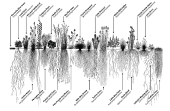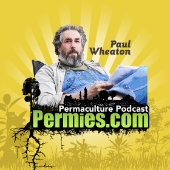Christopher Weeks wrote:The shorthand rule that Dr. Christine Jones suggests (for pasture, but it's what I like using in general, so I don't have to remember just everything) is to plant members of at least four 'functional groups' (grasses, legumes, tall herbs, short herb) which generally equates to 4-8 families within the shared root zone. (Though I think Joylynn just sold me a book, too!)
I've seen this advice, and it makes sense to me except for the grasses. I've never tried intercropping grasses but it seems like it might be troublesome. Grasses can be very aggressive weeds and readily drop seeds during harvest. Self-seeding is fine for vegetables and (to some extent) pulses, but I don't think I'd want to have my wheat/quinoa/amaranth/buckwheat harvest spread out over a large area. I have not yet grown any grains, but harvesting them (finding the right ripeness, and then stacking them into shocks etc.) seems finicky enough without having to run around my garden collecting 5-10 stems at a time. That is my very amateur impression, however I would be grateful to be corrected.






